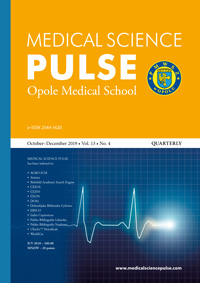Seroprevalence of Toxoplasma gondii, varicella zoster virus and human parvovirus B19 among women in the Biała Podlaska District of Eastern Poland
Seroprevalence of Toxoplasma gondii, varicella zoster virus and human parvovirus B19 among women in the Biała Podlaska District of Eastern Poland
Author(s): Małgorzata Tokarska-Rodak, Justyna Paszkiewicz, Karol Laskowski, Dorota Plewik, Marta ChwedczukSubject(s): Health and medicine and law
Published by: Państwowa Medyczna Wyższa Szkoła Zawodowa w Opolu
Keywords: human parvovirus B19; toxoplasma; herpesvirus 3; human; Poland; women
Summary/Abstract: Background: Infections in pregnant women or women planning pregnancy caused by the protozoan Toxoplasma gondii and the viruses varicella zoster virus (VZV) and human parvovirus B19 can be a danger to the fetus. Aim of the study: The aim of the study was to determine the serological status of women of childbearing age in relation to T. gondii, VZV and human parvovirus B19 in a region of Eastern Poland (Biała Podlaska District). Material and methods: The study group consisted of 174 women aged 19 to 35 (average 23, SD 3.68) from the Biała Podlaska District. Anti-T. gondii IgM/IgG antibodies, anti-VZV IgG and anti-human parvovirus B19 IgG were detected by ELISA. Results: Serological screening revealed that the most common antibodies were anti-VZV and anti-parvovirus B19 (in 96% and 60.9% of women, respectively). Anti-T. gondii antibodies were found in 28.6%. No correlation was found between the presence of anti-T. gondii, human parvovirus B19, and VZV antibodies and the age of the examined women, their place of residence, and their education. Conclusions: About 4%, 39% and 71.2% of women participating in this study were still susceptible to infection with VZV, human parvovirus B19, and T. gondii, respectively. It is therefore important to address health education primarily in women of childbearing age in order to help them undertake relevant measures for prevention of T. gondii, human parvovirus B19 and VZV infection.
Journal: Medical Science Pulse
- Issue Year: 13/2019
- Issue No: 4
- Page Range: 17-22
- Page Count: 6
- Language: English

